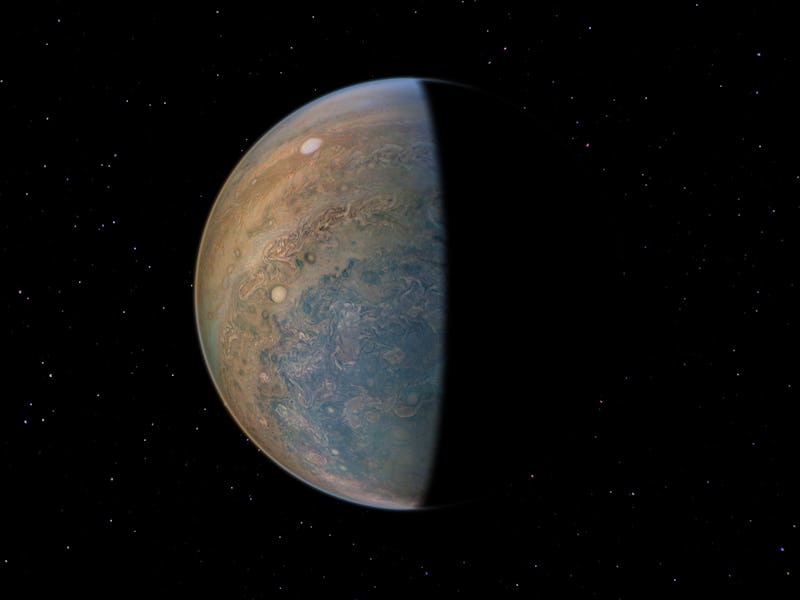NASA’s Juno space probe is currently undergoing a multi-year orbit of Jupiter, and on Thursday the agency released a series of important discoveries the probe has made so far about the largest planet in our solar system. Normally we think of NASA’s data as visual, but Juno has also gathered some pretty incredible audio from the gas giant, which NASA released in tandem with the other findings.
Seriously — you’ve seen a million pictures of planets in your lifetime. How often do you get to hear what a planet sounds like?
Juno collected plasma wave signals from Jupiter’s ionosphere during a close flyby on February 2, 2017. The emissions came in at around 150 kHz, which is a much higher frequency than the human ear can perceive (our limit is around 20 kHz), so NASA slowed down the sounds to shift them into the audio frequency range, which we can hear just fine.
The video below plays the noise over a frequency-time spectrogram. The results show that plasma is denser in the lower parts of Jupiter’s ionosphere: The frequencies get higher as the plasma gets denser and as Juno descends closer to the planet.
NASA hopes that these signals can help us understand the processes occurring in Jupiter’s upper atmosphere. A statement from the agency reads:
“The momentary, nearly pure tones follow a scale related to the electron density, and are likely associated with an interaction between the Juno spacecraft and the charged particles in Jupiter’s ionosphere. The exact source of these discrete tones is currently being investigated.”
Juno’s next close flyby will occur on July 11, when the probe will check out Jupiter’s famed Great Red Spot.
